We have an exhilarating annual tradition for the first day of the new year: watching the sun rise to confirm that there will indeed be another year ahead, followed by a joint financial review to make sure we are prepared for the year and to solidify our long-term financial and personal goals. Our favorite place to watch the sun rise is on the beach, and happily on January 1, 2020 we found ourselves on a gorgeous white sand beach with east-facing views. The low ceiling of clouds made for an interesting sunrise, with the sun only briefly peeking through a narrow band between sea and clouds before disappearing again.
Enjoying the sunrise was easy compared to finalizing our projected budget for 2020. The project of full-time RVing is an interesting challenge for budgeting because there are so many unknowns. We had never owned an RV prior to buying our Airstream, so we didn’t necessarily know what our travel style would be. There is also the question of where to travel in any given year, which can dramatically change costs. Gleaning information from other travel bloggers was critical for determining how much this lifestyle might cost us, so just as we did at the end of 2018, we share our actual financial info for 2019 in the hopes of assisting others who may want to pursue this type of adventure.
Your Mileage May Vary
The biggest caveat about this spending information is that it is our information. It’s a direct result of the choices we make, how we like to travel, our priorities. The costs of RVing vary considerably depending on the style of travel that people adopt. Camping costs can run from $0 per night for boondocking to $100+ per night at RV resorts with pools and recreation amenities. Some people stay in one spot for months at a time while others cover tens of thousands of miles every year. These are very different styles of travel and have different cost profiles. You can get a sense of our camping and traveling style from our 2019 year in review. Our most expensive and least expensive stays of the year, on a per-night basis:
To summarize other details that are pertinent to our expenses: We lived full time in our Airstream for the entirety of 2019. Other than a small 5×5 storage unit in Florida, we do not own or rent any property. We did not camp host or have any other arrangements that provided us with free camping in exchange for working at any point during the year. We stay overwhelmingly at public parks, which typically have stay limits of 7 to 14 days, so we are constantly on the move. We don’t work, so we leave camp most days to visit trails, museums, and other destinations, which means we put a lot of non-towing miles on our truck and we also pay admission fees at attractions. We rarely eat out for meals, and when we do it’s usually pizza. But we spend big on high quality groceries, eating organic products whenever we can get them. We also enjoy visiting breweries and tasting local beer.
Got it? OK, Here It Is, the Actual Spend
The table below provides, to the best of our ability, a complete picture of our spending in 2019, other than as noted below.
| Category | Total Spend | Interval Average |
Notes |
| Gas | $3,259 | $271.58/month | We reduced our total mileage this year and our gas spend reflects this. |
| Camping Fees | $9,900 | $825/month
$27.12/night |
Includes all sales and lodging taxes, reservation fees, and cancellation fees. |
| Other Travel and Lodging | $2,493 | $207.75/month | Three trips to the east coast for me: one for jury duty and two to attend volunteer board meetings. |
| Vehicle Maintenance | $2,564 | $213.67/month | Service and repairs on the truck (new tires, packrat related repairs) and the Airstream (wheel repair) |
| Vehicle Insurance & Registration | $1,609 | $134.08/month | Coverage for both the truck and Airstream, including AAA |
| Health Insurance | $11,892 | $991.00/month | Ugh! See below. |
| Medical Expenses | $9,717 | $809.75/month | Double ugh! |
| Entertainment: General | $2,168 | $180.67/month | Includes museum and park admission fees, annual park passes, subscriptions to publications we read, souvenir purchases, small charitable contributions, and gifts for friends and family. |
| Entertainment: Restaurants | $841 | $70.08/month | What exactly is a restaurant? We barely know. This should increase in 2020 with visits to areas with lots of friends and family, and actual restaurants. |
| Groceries | $10,911 | $909.25/month | As mentioned, we like to eat well at home. Includes a lot of beer and wine as well. |
| Household Supplies and Services | $3,565 | $297.08/month | Laundromats, haircuts, propane, new clothing and gear, cleaners, paper towels, etc., and fees for our storage unit in Florida. |
| Connectivity | $3,489 | $290.75/month | Unlimited data plan on AT&T for many devices, SiriusXM for the truck, Amazon Prime |
| Total: | $62,442 | $5,203.50/month | Last year our total spend, pre-tax credit, was $49,734. The biggest driver of the increase was an unexpected $10,000 increase in medical expenses. |
| Minus Tax Credit for Health Insurance Premium | -$10,741 | The credit is determined based on our income and the cost of insurance plans in our county, so this is obviously an individual thing. | |
| Net Total: | $51,701 |
What’s Not Included
This list comprehensively includes every expense we incurred in the course of 2019, from propane to car repairs to groceries to a new hat for me, with a few exceptions.
Income Taxes. This is obviously not a cost of RV living, and is based on the level and type of household income. Since we don’t work, our federal taxes are minimal and as Florida residents we don’t pay state income tax.
Major Charitable Contributions. Back when tax deductions mattered to us, we set up and funded a donor-advised fund which is the source of all our major philanthropy so it doesn’t appear in our list of household expenses. But we do include normal gifts for friends and family in this accounting.
Blog Expenses. These only amount to a few hundred dollars per year for domain registration, hosting, and some paid plug-ins. But I pay them from a separate business account so they don’t show up in household expenses.
Professional Fees. For the time being, I am keeping my law license active by continuing to pay dues to the Florida Bar, which is not an expense most people would have. If this applies to you, you know who you are and what this costs.
Here are photos of approximately 10% of all our dining out experiences for the entire year:
Discussion
Health Insurance and Medical Expenses. We actually like our health insurance, since our Blue Cross / Blue Shield plan gives us access to a massive nationwide network of providers and the insurance company has never quibbled with us over paying any claims. What we don’t like is the high cost. In 2019 we paid almost $1,000 per month in premiums for what is essentially a catastrophic plan, with a family deductible of $15,800 ($7,900 per person). During Ken’s hospitalization we obviously ended up paying the full deductible for him, and we paid another $1,800 out of pocket for me, mostly for dermatology visits.
We believe we will qualify for a substantial premium tax credit when we file our taxes; last year our tax credit covered 100% of the premium cost. [EDIT March 2020: Our premium tax credit ended up being $10,741. This is based on our modified adjusted gross income (under the ACA we are responsible for paying a percentage of our MAGI for health insurance) and the cost of the second-lowest-cost Silver plan (SLCSP) on the ACA exchange in our county. The difference between our responsibility and the SLCSP is the amount of our credit, regardless of which plan we actually purchase. Our net cost of health insurance ended up being $1,151 or around $100/month. This expense is highly dependent on your income, the cost of plans in your market, and the plan you choose.]
But even with the tax credit we are still looking at spending close to 20% of our annual budget on healthcare expenses in 2019. It’s simply not tenable to go without insurance, as our experiences this year show. There are plenty of risks involved in the things we encounter when traveling the country: loose rocks on trails, microbes, my wedding ring, etc. Even with quality insurance and tax credits (which could disappear at any time if the Affordable Care Act goes away, as has been threatened for years), deductibles alone are enough to significantly impact the budget when medical services are needed.
Activity Costs. In 2019 we spent most of the year in rural areas and our main activities were free: hiking, wildlife viewing, star photography. In 2020, our travel itinerary has us visiting many more cities, so museum admissions will probably increase. Similarly, our long visits in rural areas meant we were not tempted to visit lots of restaurants, because they simply didn’t exist. Focusing our year on outdoor activities did mean we spent money on gear like new day packs, hiking pants, and hats, and we are overdue for new hiking shoes. We rarely buy souvenirs (living in a tiny space will definitely put a damper on collecting tchotchkes) but since we hit the road I’ve been collecting lapel pins from places we visit. I make them into magnets by clipping off the post and attaching a stick-on craft magnet. A significant part of our cost for souvenirs ends up on our magnetic memory board in the rig.
Expenses We Have / Don’t Have. As mentioned above, our expenses reflect our particular circumstances. For example, our home address is the home of a family member, so we don’t pay for a mail forwarding service. On the other hand, having a sticks-and-bricks home address means there is no chance of getting out of flying back for jury duty, as I discovered this year. I also choose to participate in a volunteer board with my university, and traveling for meetings twice each year adds expenses as well as plenty of hassle. We’ve chosen to get routine medical care (dentist visits, dermatology visits) in places we happen to be visiting, like Tucson, and we don’t fly back to Florida for those appointments.
Overall. Really the most significant cost feature of our entire budget is medical expenses — whether we have to spend our (high) deductible and whether we qualify for a premium tax credit represents a potential swing of over $25,000 in costs for the year (premiums + full deductible). It’s no wonder that many families in America face severe financial crises as a result of medical issues, even when they have insurance. For 2020, we expect our camping cost will be higher, because camping in more developed / populated areas tends to be more expensive, but we expect overall costs will go down so long as we return to our lifetime average of extremely low medical expenses. We’ll let you know in a year whether our predictions come true.

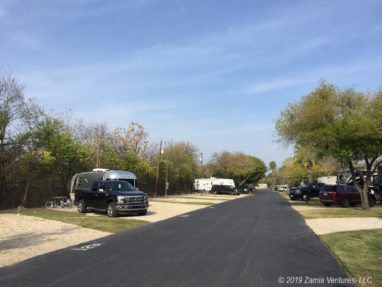
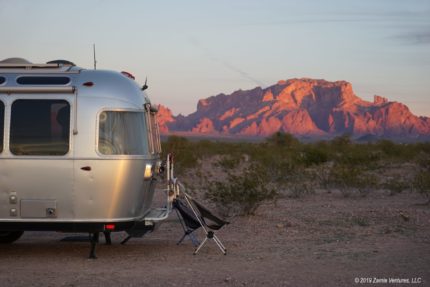
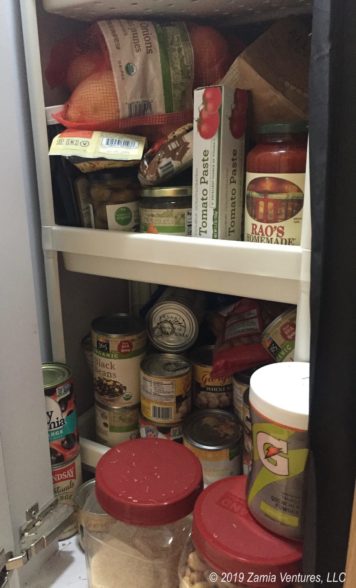

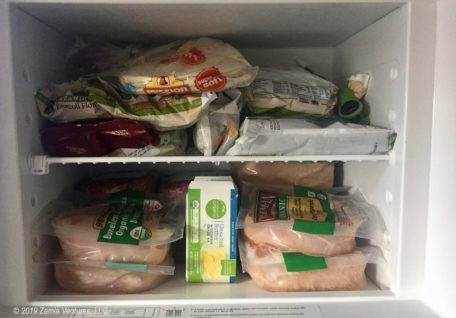
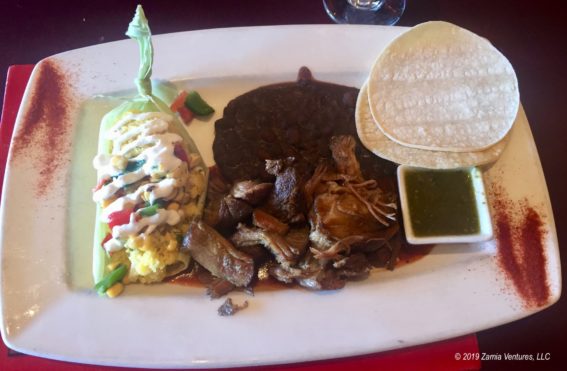



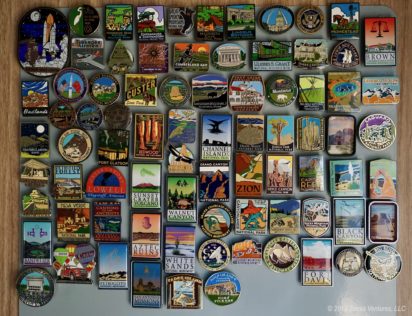
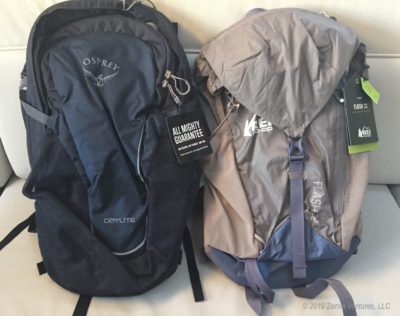
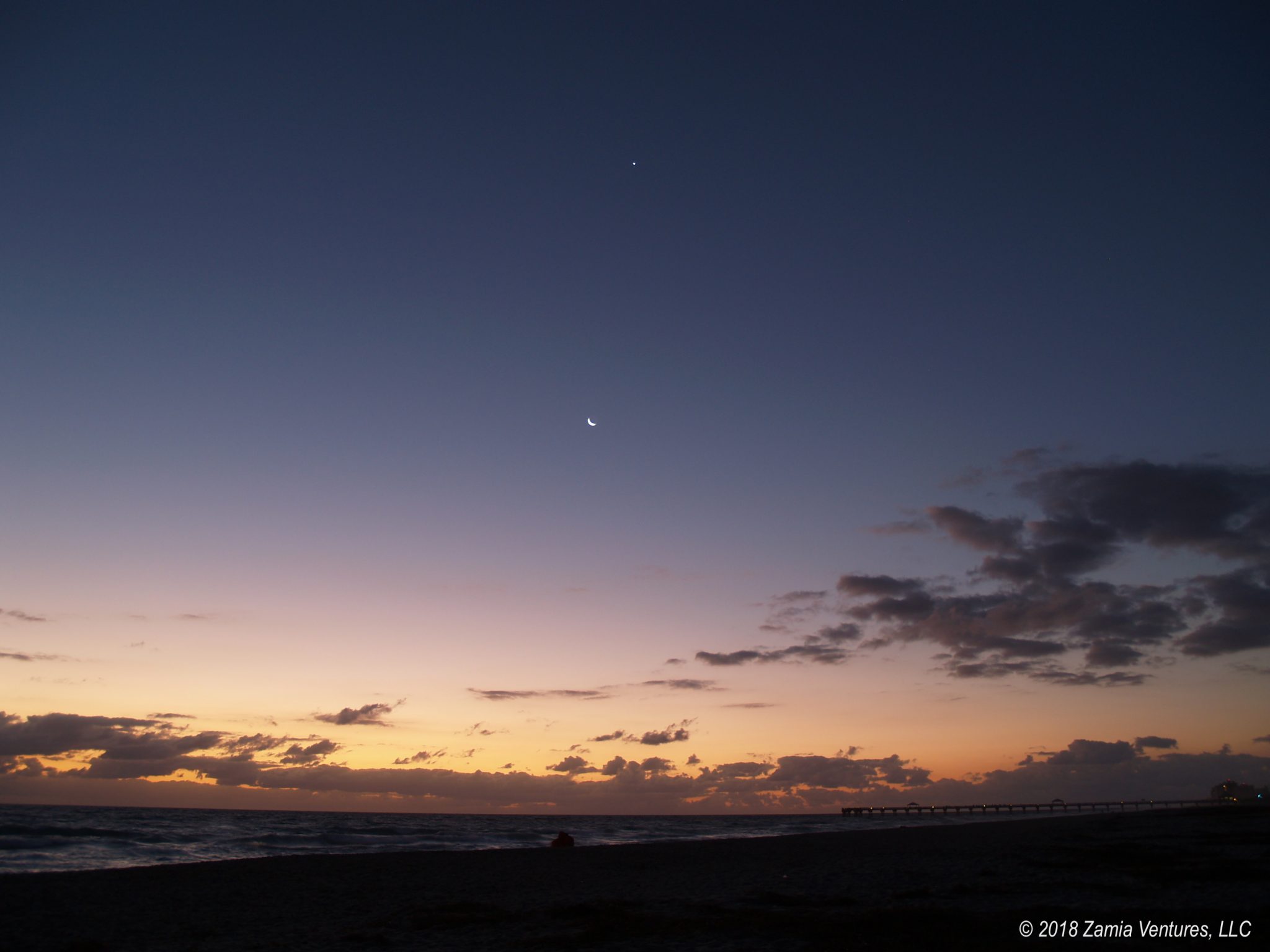
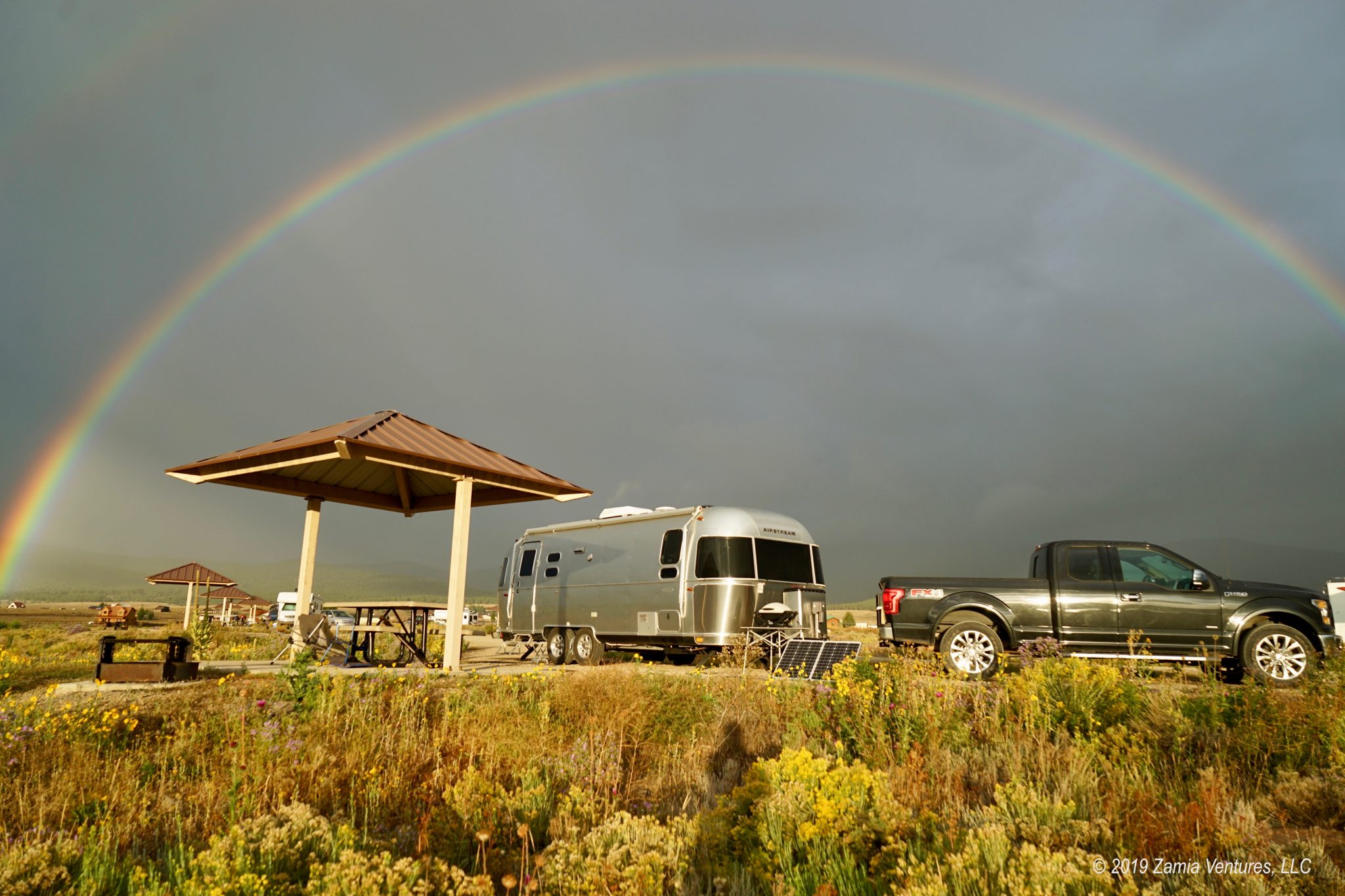


This is fascinating, and I know it will be immensely helpful for people considering fulltime RVing. As you said, budgets are different for everyone, depending on priorities. Like you, good food is a priority for us, and our monthly expense about the same as yours. We also enjoy eating out (if there’s someplace really intriguing) and that adds up! I’ve been referring to our summer and fall on the east coast as our ‘culinary tour.’ We justify our behavior by saying that it’s all part of the experience, LOL! But we do need to knock it off and we’re kind of glad to now be in parts of Florida where the restaurants aren’t so compelling.
Here’s to a wonderful New Year for you guys, with many grand adventures and good health! We’re looking forward to seeing you in a couple of weeks and celebrating with Apalachicola oysters and shrimp. All fixed at home, of course!
Hey, there is nothing wrong with spending money on things that are important — like excellent food! It’s just a matter of making sure you are truly devoting your time and resources to what matters most to you, and that the whole budget balances out at the end. While it’s certainly possible to live in an RV and spend very little, I think it’s easy for people to underestimate how much it costs to live a comfortable middle class lifestyle (like one that involves having electricity and TV and internet service and regular showers) while on the road. I hope we provide a useful data point in that regard.
We are looking forward to another fulfilling year on the road. Seeing friends and family is a big part of that, and we’ll start off right seeing you guys in Apalachicola!
Ok, first thing’s first. That veggie pizza is the stuff dreams are made of! Oh my lord! I NEED that pizza!! Where’s it from?
Second, and more importantly, this stuff is so interesting. It’s always fun to be a financial voyeur and compare what you’re doing to what someone else is doing and then ask “What the hell is WRONG with us??” Honestly, your camping and entertainment costs are much lower than ours, but as you said – coming east and into cities will change those numbers next year. We actually did MUCH better this year compared to last year in regards to staying at government parks rather than commercial ones, and yet our campground fees were still high – thanks to places like Pennsylvania where a night in a state park can run over $50.
Finally, I cannot agree more with your analysis about health insurance. It is SUCH an enormous expense and it just HAS to be that way. I see people signing up with these fly by night insurance companies and I cringe. We have had massive health expenses every year so far and I cannot tell you what a relief it is knowing we have good insurance. It is absolutely not surprising that medical expenses are the undoing of so many American families every year. It’s just awful.
Anyway, this will be a very helpful post for lots of would be full-timers. Thanks for sharing all the details.
That pizza is from Mountain Pizza and Taproom in Pagosa Springs, CO, and it is possible that I still dream about it.
I totally agree on the fun of financial voyeurism. I follow a lot of financial bloggers and that is my favorite genre of post, so I figured I would bring that type of post to the world of full-time RV travel. It is also interesting to me that I can still be surprised by our numbers, when they are all put together, even though I participate in all the activities and reservations and other spending that result in these totals. There’s nothing like cold, hard data to make you face facts.
I am glad your 2019 featured more public campgrounds, because they are usually so much more enjoyable even if not necessarily less expensive. We only have 2 or 3 privates scheduled in the first 9 months of 2020, so we are looking forward to excellent scenery even though the camping fees for state parks are still pretty expensive in the east and midwest.
Health insurance…. ugh. Can’t live without it, but can’t really enjoy paying those bills, either. That’s all I can say.
Such good information here for anyone considering the full-time lifestyle. We all have to make choices based on our own variables, but looking at your table, and explanations how you live, it serves as a good framework to work from.
I’ll tell you a diesel pusher is in my guestimation 2X-3X more expensive to operate and live in than someone who pulls a trailer. $330 for a 7 gallon engine oil/filter change…
I recently discovered REI sells used items. It ranges from you’d be hard pressed to see any damage/wear, to moderate wear. It’s not for everyone, but paying $92 fora $230 pair of boots is hard to pass on. Given new boots don’t seem to last me more than @500 miles/1 year the new “used” price wins.
I think the hardest part for people planning to embark on this lifestyle, at least in terms of financial planning, is figuring out what style of travel they will actually enjoy. It’s easy to think, “RVing is going to be cheap! Blogger X spends only $25,000 per year!” but are you really going to be happy spending all your time boondocking? Do you have the equipment to do that (efficient rig / solar panels / etc.)? Or do you actually want to visit Acadia in the summer and Organ Pipe Cactus in the winter, and put all those miles on the rig in between? I have no idea what it costs to do other stuff, but I know what we do and what it costs, and we’re happy to share it. Your estimate on the cost increase for a big Class A diesel pusher is interesting, since we have no experience at all with that type of rig.
The REI used items do sound like a good deal. We’ll have to check that out the next time we are near an REI. Sadly, Florida has few (1 each in Orlando and Jacksonville).
I should have added, the REI used items are only available by mail.
Hmm. Not sure I would buy shoes without trying them on, but then again I have weird feet. 🙂 But it does make it easier for people who don’t have an REI close by.
I’m going to jump on the voyeur bandwagon — these posts fascinate me, but I’m a bad blogger and don’t do one of our own. I can say, though, that my health insurance coverage was our biggest expense in the first year and was the one that made it more expensive overall than had we stayed in our house. Crazy! It was our friend upthread there, Laura, who said something in one of her money posts along the lines of “the way you spent pre-full-time is the way you can expect to spend on the road,” and I’ve found that to be so very true. People who think hitting the road will lower their living expenses need to think twice!
As people who always had employer-based health insurance, we were pretty shocked by the prices in the marketplace, especially considering the high deductibles that came with it. Since we moved out of a waterfront condo in Miami to hit the road, we found that our expenses went down when we hit the road. Walmart for the win? But we are the exceptions, I think. Overall, our spending profile on things like groceries and entertainment has been pretty consistent, as you and Laura point out — the only real change was a decrease in our rent expense from moving out of a high cost city. Everything else stayed the same or went up. And we have multi-decadal budgets/projections/variance analyses to demonstrate this! Even though I think we are pretty clear-eyed, the data continue to surprise me and be instructive, which is a reason why we go through this exercise every year.
Really enjoyed reading and learnt a lot from your blog, especially since you two aimed for living a meaningful life with purpose as opposed to strictly cost cutting. I agree with you that healthcare cost is the most important – I’ve always lived a healthy life but that didn’t help to prevent a ruptured appendix which led to a 5 night ICU stay few years ago. It happened merely two days after switching to a new health plan at work, they were billed for a total of $120k, I’m sure they negotiated a heavy discount but still, I’d never go without health insurance. Having said that, $1k/month for a high deductible plan is still hard to swallow, glad that you will get most of that back from tax credit.
This might be too personal and no worries if you’d like to keep it private – Any tips on how you reduced your taxable income for maximum tax credit and still managed to have access to living expenses? I managed to stop working two years ago and hubby is still a couple years away from retirement, he is 50 now, so health care is definitely the main factor that keeps him working longer.
Thanks again for sharing your adventures with us.
Thanks for the kind words about the blog and for commenting on the post. Bloggers love to get comments! I agree with you that health care is pretty much non-negotiable — even though we are generally healthy, for us it’s just too big of a risk to go completely without coverage. In terms of qualifying for the tax credit, we have a few strategies.
The maximum amount of income we can have and still qualify for the premium tax credit is 4 times the federal poverty level for a family of 2, which currently equals $67,640. Since this is based on taxable income, anything that happens inside our retirement accounts (IRAs) is excluded and in any case we are too young to withdraw from our IRAs without big tax penalties. We do not do stock transactions in our taxable investment accounts because we can’t afford to have much capital gain and still keep our premium tax credit, but since we are invested mostly in index funds there is not much to do in any case.
We started full-timing with a very large cash position (from selling our house) and ever since we stopped working and lost access to our employer-based health insurance we’ve just been living off that cash and the interest and dividends generated in the taxable accounts.
We also choose to get the cheapest health insurance plan available in our market, which is a bronze plan with Blue Cross Blue Shield, and the premium tax credit is based on the cost of silver plans in our market. Since those silver plans are so much more expensive, it means the tax credit is large enough to basically cover the entire premium for us. That’s probably more info than you needed, but if you want more detail feel free to email me (use the contact form under the “about” tab).